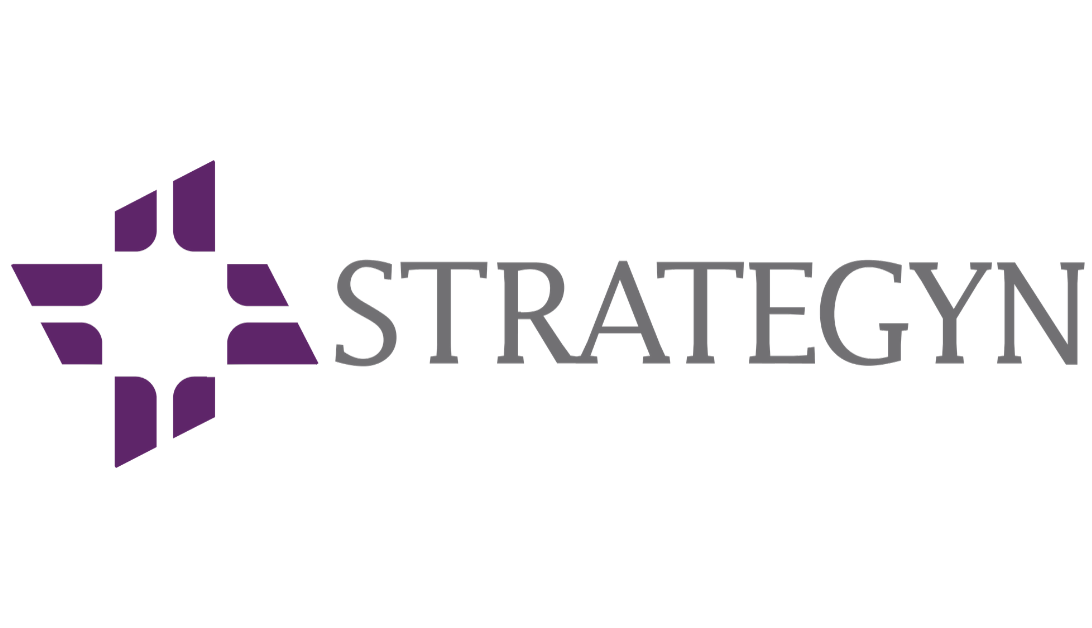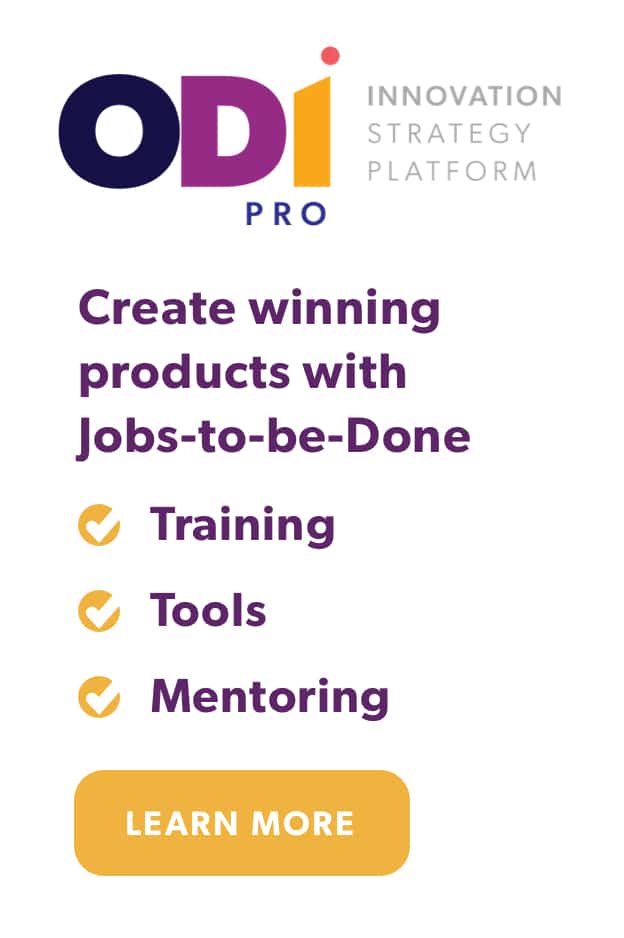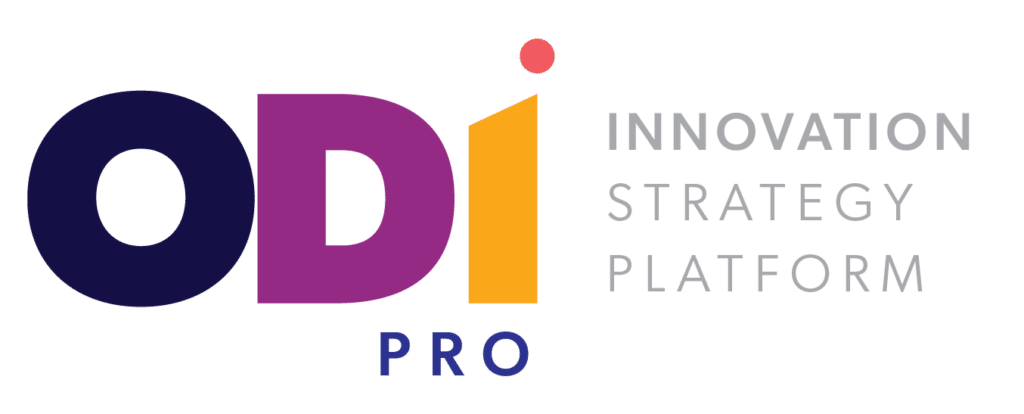Have you ever wished that the process of innovation could be more reliable? Predictable? Scalable?
That it was easier to dream up the new products or features that your customers would go crazy for?
That you could come up with brilliant ideas like we’ve seen from Thomas Edison, Steve Jobs, Henry Ford and other “born innovators”?
As it turns out, innovation can be predictable, and you can think like the famous born innovators—you just need a new lens through which to view the innovation process.
This new lens is based on the Jobs-to-be-Done theory, and using it challenges you to shift from a product-focused mindset to a job-focused mindset. There are three key components:
- Understanding the 5 types of “jobs” your customer is trying to complete
- Understanding the job steps the customer goes through to complete each job
- Understanding the customer’s desired outcomes
We’ve already covered the first two components. Let’s dive into the third.
Understanding the Desired Outcomes
Once you understand the jobs your customers are trying to complete and the granular steps they’ll go through to complete them, the next step is to understand how they will evaluate their success in completing their jobs.
You need to know what outcomes they’re looking for—and there are lots of them, related to each type of job and each job step along the way.
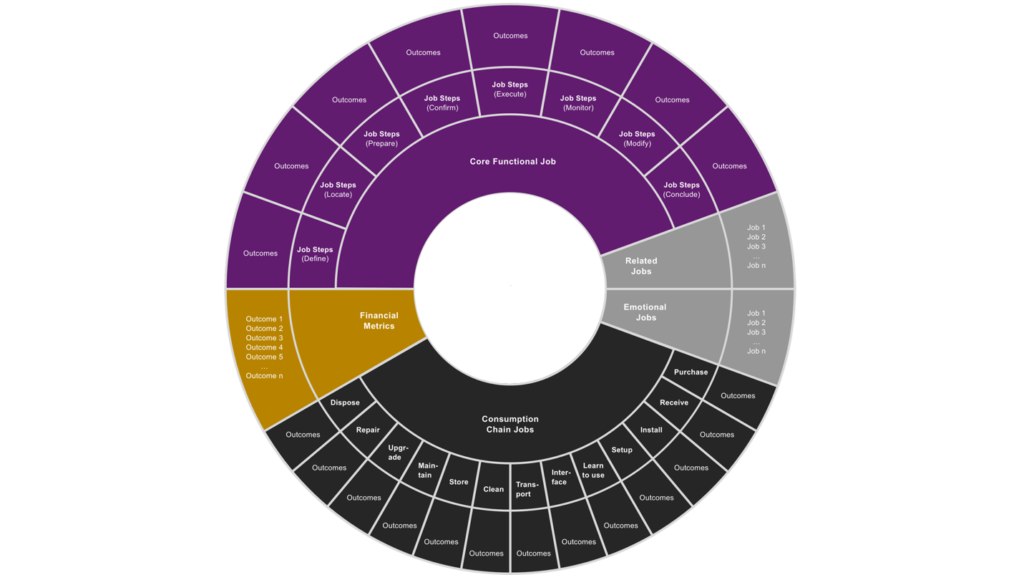
If we look at the job of cutting wood in a straight line and the associated consumption chain jobs, for example, some of the outcomes customers are looking for include:
- Minimize the likelihood that debris gets in the face when watching the blade track the line
- Minimize the likelihood that the blade guard snags material
- Minimize the likelihood of inadvertently moving off the cut line/path
- Minimize the likelihood of snagging the cord on the material
- Minimize the cost of repairs due to cut cords
When we worked on this research with Bosch, we found 75 desired outcomes for this particular job alone.
We’re not talking about solutions here. We’re talking about documenting how customers define success when getting their jobs done.
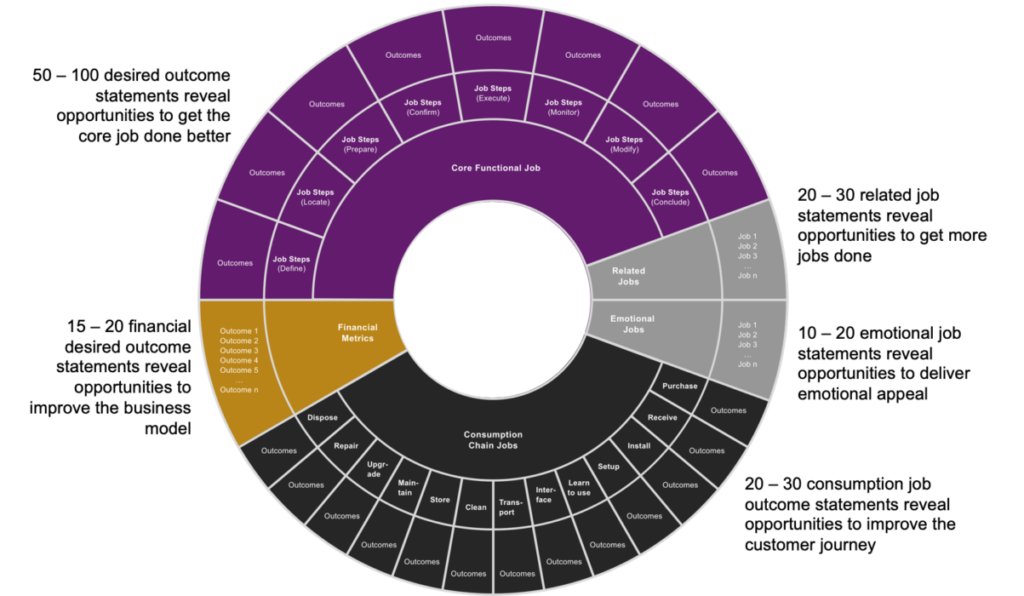
When you understand all of your customers’ desired outcomes, you can easily design innovative products to satisfy these outcomes—and your products will be about 5X more likely to succeed in the marketplace.
Skeptical? Imagine for a moment that your product development team understands every single metric by which the customer will judge your product or service. You’d be able to create solutions that cater directly to those metrics. The goal of innovation, after all, is to devise solutions that address unmet customer needs. The first step to meeting unmet needs is creating an exhaustive list of those needs.
This approach and lens on innovation offers a way to systematically define, capture and use all of these inputs so we can make innovation more predictable.
The product owners at Bosch, for example, are not famous born innovators. But they have been able to transform their product offerings and become market leaders by choosing to see the world through this new lens on innovation.
With a full list of customer needs in hand, Bosch added features that directly addressed several of these needs—like their Direct Connect™ cord system that connects an extension cord directly to the saw. If the cord gets cut, the user can simply grab another extension cord and continue working, which “minimizes the cost of repairs due to cut cords.”
These innovations helped Bosch to successfully enter the competitive and commoditized North American circular saw market with a saw that got the job done better. Check out the full Bosch case study.
Without these insights, innovation remains a game of chance. Having them changes everything.
You, too, can choose to see like the born innovators. You can choose to be more effective at creating breakthrough products.
Will you make that choice?
